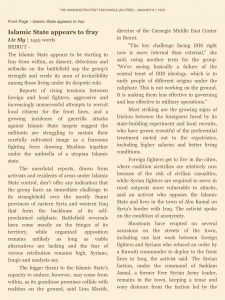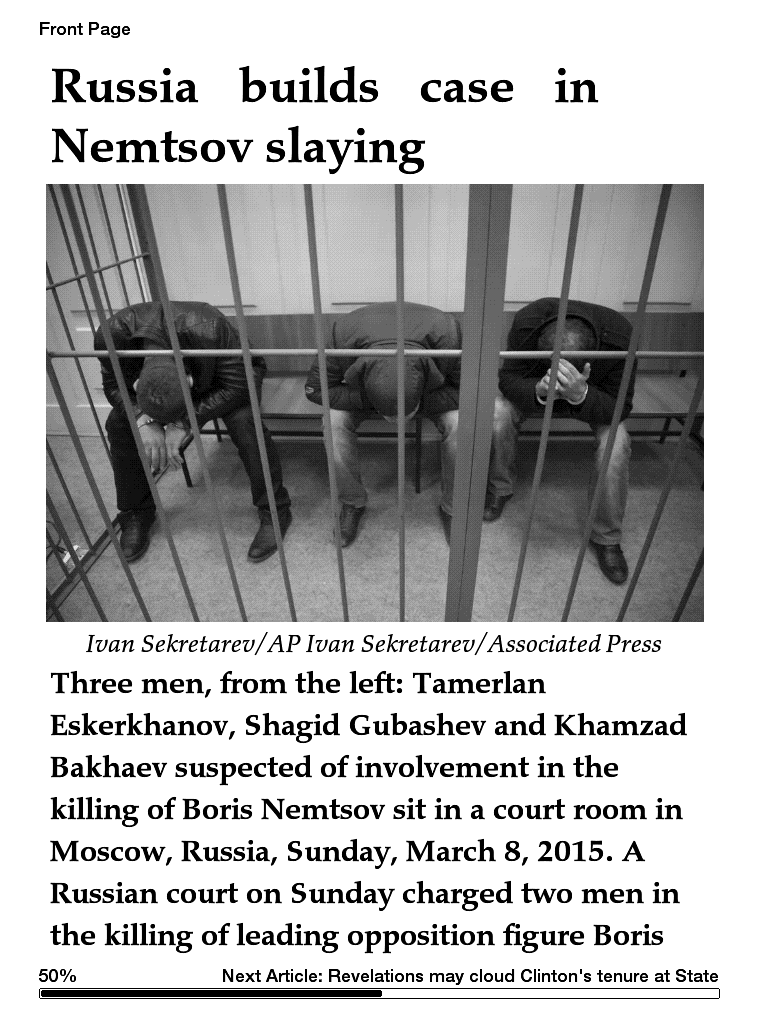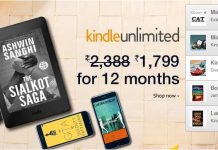While I’m well-informed on developments in the tech industry and social media, I’ve been feeling woefully uninformed about other news, and I decided it was time to start reading a paper. Although I tend to prefer the writing and journalism of The New York Times, I decided to start a 14 day trial of The Washington Post on Kindle. I chose the Post for two reasons. 1. It’s the paper where I live and where I set my fiction, and I’m hoping to find ideas for stories. 2. It was $8 a month cheaper. That’s almost the cost of a Scribd subscription!
A subscription to The Washington Post on Kindle is $11.99 a month. Note that I’m talking about the subscription you can read on eInk Kindle or Kindle apps, not the Washington Post app for Kindle Fires. The latest issue is supposed to download around 5:00 am ET, and so far, it’s been available every day when I wake up, around 7:00.

I started out reading it on the Kindle app for iPad, and it’s a good reading experience as you can see in the screenshot. The layout is 2 columns in portrait and 3 columns in landscape. Navigation is easy. I couldn’t get a screen shot of it, but if you tap the center of the screen to get menu options, there’s a navigation bar at the bottom where you can skip to the next article. There’s also a Table of Contents for all the articles.
After a day or two, I switched to my Paperwhite, and that’s the device I think I’m going to stick with. Call me old fashioned, but reading it on the Paperwhite looks more like reading the actual paper. I find I prefer the black and white images.
Navigation on Kindle is also easy. As you can see in the screenshot, there’s a Next Article link at the bottom, and a progress bar so you can see how much more there is to read. That format is not unique to the Post. It’s the standard layout for Kindle publications.
 I won’t comment on the quality of the news because there are numerous papers available for Kindle, and you can probably find one to meet your writing and political standards. I prefer this to the Washington Post app because it’s static. In the past, when I’ve used their app or the New York Times app, I’ve found that articles disappear throughout the day to be replaced by wire news or short breaking news articles. That’s not a problem if I can read everything at breakfast, but this version still has all the same articles at lunch or dinner time, and I don’t feel as frantic to read everything right away in case a long-form article vanishes later in the day.
I won’t comment on the quality of the news because there are numerous papers available for Kindle, and you can probably find one to meet your writing and political standards. I prefer this to the Washington Post app because it’s static. In the past, when I’ve used their app or the New York Times app, I’ve found that articles disappear throughout the day to be replaced by wire news or short breaking news articles. That’s not a problem if I can read everything at breakfast, but this version still has all the same articles at lunch or dinner time, and I don’t feel as frantic to read everything right away in case a long-form article vanishes later in the day.
No, I don’t read everything. I appreciate the Next Article link at the bottom to skip articles I’m not interested in. I burned through the paper quickly this morning because there wasn’t much that interested me.
I plan to stick with it past my trial period. I’m enjoying perusing the paper at breakfast. On my Kindle, I don’t get messy fingers, and I think the $11.99 price tag is reasonable. If I weren’t looking for local news, I think the $19.99 per month price for The New York Times is also worthwhile. I thought about getting both, but that might be more news than I need. While I want to stay informed, I’ve never considered myself to be a new junkie.

































I wouldn’t bother with a paid subscriptions to any newspaper. This isn’t long ago. You don’t need to read a newspaper from front to back to find the stories that interest you.
For instance, during WWII, if you wanted to find articles reporting on the Jewish holocaust in the NY Times, you had to look for a tiny article somewhere past page 20. The FDR administration was doing its best to keep a lid on that story, lest it come under pressure to do something. The NYT agreed. The “newspaper of record” has a bad record for burying stories that really matter. It did the same with Stalin’s manufactured Ukrainian famine of a decade earlier. It’s still refusing to give back the Pulitzer it won for the reporter, paid off by Stalin in booze and women, who covered up the Ukrainian horrors.
Today, you find a website that actually cares about the stories you care about (in the case above, a Jewish website), and you’ll get links to any source on the planet. You’re not dependent on the dubious integrity and political agenda of a newspaper.
For instance, if you care about the harmful impact of government management on healthcare, you won’t find it in an American press that’s been cheerleading Obamacare and took forever to expose the VA scandal. You’ll find it on websites that have links to the recently exposed horrors of Britain’s National Health Services, horrors that have grown so great, they’re condemned by newspapers across the spectrum in the UK.
One expose found that the terminally ill were so poorly cared for in one NHS chain of hospitals that around 1200 people essentially starved to death lying in their own sh-t. They were abandoned in hospital back rooms and not even given basic care. The result has been huge increases in NHS funding in recent years. How did the NHS bureaucracy respond? It grew itself. One chain hired 40% more bureaucrats but only 8% more nurses. That’s the NHS. If you get sick in the UK, make like a European and take the first plane for home.
When I researched my Hospital Gowns and Other Embarrassments, I needed to explain for my teen-girl readers how to deal with ill-treatment (sexual harassment and abuse) in hospitals. When I did a Google search for “hospital complaint” from a Seattle IP address, do you know what the top hit was?
It was the official ‘how to make a formal complaint’ page for the NHS. Four of the top ten hits on the first Google page were for the NHS. That’s how bad it is. People in the UK ticked off at the NHS are so numerous, they’ve bent the Google search results for the entire planet. In my book, I detail why the NHS’s grievance procedure is worthless. The NHS is judging if the NHS has done anything wrong.
Besides, you don’t need a subscription to get to almost any story. The Washington Post paywall is easily bypassed. You can get to NYT and WSJ articles by Googling by the title of the article and clicking on that link. To allow Google to full-text search articles, they have to leave that backdoor open. Yes, there are speciality news sites and academic databases that have firewalls that can’t be bypassed. I often run into those editing scientific books and have to bounce any question I might have back to the author. But you’ll need to spend a fortune subscribing to them or have academic links that pay for your access.
Newspapers simply aren’t where the action is any more. They’re laying off staff and dying as their readers pass away. As subscribers leave, so do the advertisers who are the ones who really pay the bills. The action has moved to a more varied and adaptable variety of sources on the Internet. Stories seem to have a life of their own, rising or not rising to prominence independent of whether a major paper covers them or not.
@Michael, but I like having a bunch of articles, all wrapped up for me that I can page through one at a time. Sure, I can get all the same articles on their site, and I know how to bypass paywalls, but I’m willing to pay for the convenience of having them delivered every morning. Seriously, considering how much I spend on eBooks, I can afford 12 bucks a month. If it helps keep a paper in business, I’m willing to do my small part.
Juli, in case you have not heard about RSS-to-Kindle services: there are web apps like my Sendtoreader Periodicals http://sendtoreader.com/about-periodicals/ and KindleFeeder http://kindlefeeder.com that deliver news from any RSS feed to their users’ Kindles. That can be a nice addition to the official periodicals we see in the Amazon store.
@Sergey, yes, I have heard of such services. I also use Instapaper to grab long-form articles I find through my feeds and compile them to send to my Kindle. Oddly enough, I’m happy using Feedly to browse my RSS feeds. That (plus Twitter) is how I keep up with tech news. I’m looking for a broader range of news from the Post, and I’m okay with them doing the job to curate it for me.